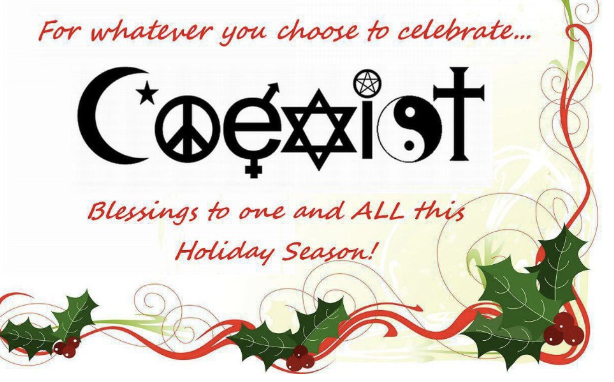Beyond Christmas: How other religions celebrate the winter solstice

We all know about Christmas, Hanukkah and even Yule, but there are some holidays many of us in America have never even heard of, so here are how seven other religions celebrate the most wonderful season of all.
Soyal-Soyal is a holiday that starts Dec. 21, the shortest day of the year. It is celebrated by the Hopi and Zuni tribes. The main point of the holiday is to arouse the sun from its winter slumber. It is the start of another year on the wheel of the year and is a time of purification. Prayer sticks called paphos are made before the ceremony begins and are used to cleanse the home, the spirit, crops and livestock. Then Kivas or sacred underground chambers are opened to mark the beginning of the Kachina season. At this time kachina dolls are carved to look like guiding spirits/gods and are given to those who will look over and care for them, usually mothers and older female family members.
Yalda-Yalda or shab-e yalda is a Persian festival celebrating the winter solstice. The holiday is from Iran, and it marks the last day of the Persian month of Azar. It is seen in the traditional sense as the winning of light over darkness. It is also the birthday of the sun god Mirtha. Families come together and celebrate with a special meal usually made up of nuts and pomegranates. Some people even made a family tradition of staying up all night to welcome the morning sun. It is also celebrated on the 21st of December.
Inti Raymi-Inti Raymi is an Incan holiday celebrating the Peru winter solstice. This means that it is actually celebrated in July because that is when it’s winter for them. It is in honor of the sun god and was celebrated before the Spanish banned it. Thankfully they have reclaimed their religion and once again celebrate it, but now with mock sacrifices.
Saturnalia-Saturnalia was the Roman version of Yule, a day where everyone worshipped and partied, and even slaves were treated as equals. It lasted several days, and during those 12 days, feasts, games and gift exchanges were held all over the country, all in the name of the gods.
Midwinter-Midwinter isn’t a religious holiday but rather a new one made for scientists in Antarctica. Midwinter is a celebration where those stationed in Antarctic research stations celebrate the fact that they are still alive. Usually with movies, a large meal and some games and special films, sometimes even handmade gifts for each other.
St.Lucia’s Day-St.Lucia’s Day is a Scandinavian holiday celebrating St.Lucia. It is a light festival meant to honor the Christmas martyr St.Lucia. She became a martyr because when she was a young girl she would bring persecuted Christians in Rome food. The day is celebrated with young girls wearing white dresses with red sashes and crowns of evergreen and candles, usually electric ones for small children, but real ones for older women aged 12 and up. Like here, they leave treats for her and for her donkey, sandwiches.
DongZhi-DongZhi is a Chinese festival taking place between the 21st and 23rd of December. Similar to the Dia de Las Muertos celebration, DongZhi in northern China was a day that historically was celebrated going to the tomb of family members and cleaning the tomb, offering food and drink to the ancestors and helping to maintain the tomb. Then they would gather and eat hearty, fatty foods that help stave off hunger, disease and help them stay warm.
All of these holidays are an important part of cultures many of us think have either died or are dying, but they are as alive as Christmas is here.









You must be logged in to post a comment Login